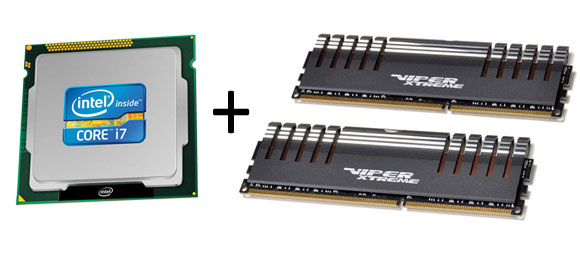URL: http://www.anandtech.com/show/4503/sandy-bridge-memory-scaling-choosing-the-best-ddr3
Intel's Second Generation Core processors, based on the Sandy Bridge architecture, include a number of improvements over the previous generation's Nehalem architecture. We’ll be testing one specific area today: the improved memory controller. Current Sandy Bridge based processors officially support up to DDR3-1333 memory. Unfortunately, due to changes in the architecture, using faster rated memory (or overclocking memory) on Sandy Bridge via raising the base clock is extremely limited. Luckily, there are additional memory multipliers that support DDR3-1600, DDR3-1866, and DDR3-2133 memory. Some motherboards include support for even higher memory multipliers, but we’ll confine our investigations to DDR3-2133 and below.

Since Sandy Bridge is rated for up to DDR3-1333 memory, we will start there and work our way up to DDR3-2133 memory. We'll also be testing a variety of common CAS latency options for these memory speeds. Our purpose is to show how higher bandwidth memory affects performance on Sandy Bridge, and how latency changes—or doesn’t change—the picture. More specifically, we’ll be looking at the impact of memory speed on application and gaming performance, with some synthetic memory tests thrown into the mix. We’ll also test some overclocked configurations. So how much difference will lowering the CAS latency make, and does memory performance scale with processor clock speed? Read on to find out.
Nenhum comentário:
Postar um comentário